What Is Behavioral Therapy?
Learn about behavioral therapy treatment, its uses, benefits, and more in this comprehensive article.
Written and medically reviewed by the clinical team at Ripple Ranch Recovery Center, including licensed therapists, addiction specialists, and medical professionals.
What Is Behavioral Therapy?
Behavioral therapy is a term that refers to a wide variety of treatments used to modify maladaptive or dysfunctional behavior. The goal of behavior therapy is to encourage desired behaviors while eliminating undesirable ones. Behavioral therapy principles are founded on behaviorism, a philosophy based on the belief that people learn from their surroundings. This approach caught up in the early twentieth century and spread like wildfire.
Unlike insight-based treatments, behavioral therapy is action-oriented. As a result, modern behavioral therapy is usually quite focused. The behavioral treatment approach targets the behavior, and the process involves teaching individuals new habits to reduce or eradicate the old maladaptive behaviors.

Table of Contents
Learn More About Ripple Ranch Recovery Center
Our team is standing by to discuss your situation and options. Your call is fully confidential, and no obligation is required
What Does a Behavioral Therapist Do?
Behavioral therapists are medical practitioners who assist in treating mental health conditions. They apply their education and expertise to treat adults and children suffering from addictions, phobias, anxiety, and other mental health concerns, as well as help them learn how to manage their symptoms.
Types of Behavioral Therapy
Behavioral therapy is classified into several types and forms. The types of behavioral therapy selected for use can vary depending on a variety of factors, some of which are the severity of the individual’s symptoms and the disorder being treated.
Applied Behavior Analysis (ABA)
Applied behavior analysis (ABA) focuses on changing problematic behaviors to ameliorate social functioning. The operant conditioning theory, established by Burrhus Frederic Skinner in 1927, is used in applied behavior analysis to teach targeted behaviors through rewards or punishments.
ABA therapists, such as those from Ripple Ranch Recovery Center, employ positive or negative reinforcement to induce desired behavioral changes. They also help clients develop communication and day-to-day life skills so that patients can live independently. The majority of ABA therapists are Board Certified Behavior Analysts (BCBAs).
ABA Application
Autism spectrum disorders (ASD) are most commonly treated with ABA therapy, with 72% of therapists specializing in ASD. Applied behavior analysis can also help treat post-traumatic stress disorder (PTSD), obsessive-compulsive disorder (OCD), memory loss, and other health concerns.1
Cognitive Behavioral Therapy (CBT)
Cognitive behavioral therapy (CBT) entails a therapist working with a patient to manage persistent and problematic emotions, habits, or behaviors, such as anger, depression, phobias, and overwhelming fears, and change them into more positive ones. CBT has continuously proven its effectiveness through years of research.
One study evaluating the efficacy of CBT for generalized anxiety disorder (GAD) found that 77% of patients no longer met diagnostic criteria for GAD posttreatment. Further, the results remained significant at six- and twelve-month follow-ups. While this behavioral treatment approach may work well on its own, CBT has been shown to necessitate more effective and long-term results when combined with other treatments.2
Cognitive Behavioral Play Therapy
Cognitive behavioral play therapy makes use of play to evaluate, prevent, or treat psychosocial difficulties. A therapist may use play therapy to teach a child to think and behave in new ways.
Dialectical Behavior Therapy (DBT)
Dialectical behavior therapy (DBT) is a therapeutic behavioral treatment approach based on CBT principles but focuses more on mindfulness and living in the present. By remaining mindfully present, DBT therapists aim to increase patients’ tolerance for bearing past painful feelings. Dialectical behavior therapy instructs patients on managing intense mood swings to live a more balanced life.
DBT is most commonly used to treat patients with borderline personality disorder (BPD). Individuals with BPD frequently experience suicidal thoughts and manic-depressive episodes, so DBT focuses on boosting confidence and self-esteem and teaches patients how to slow down and pay attention to their emotions.
DBT Application
While DBT therapists primarily see clients with borderline personality disorder, this form of therapy has also shown success in treating bipolar disorder, depression, eating disorders, and substance use disorders. At Ripple Ranch Recovery, our therapists utilize DBT in individual and group settings, depending on each patient’s needs.
Exposure Therapy
During exposure therapy sessions, therapists expose their clients to their fears and phobias. This behavioral treatment approach is very effective and has a strong evidence base in treating anxiety, depression, and PTSD.
Specific phobias are maintained behaviorally through avoidance of the stimuli inducing the phobia. This avoidance prevents individuals from learning novel and adaptive behavioral responses when confronted with the feared stimuli. Exposure therapy entails re-engaging clients with feared stimuli or situations via virtual reality, reality, or imaginal exercises to desensitize them over time. It typically follows an independently tailored fear order that ranges from mildly anxiety-provoking stimuli to panic-inducing situations.
Exposure Therapy Application
One form of exposure therapy is prolonged therapy (PE), which is the first-line treatment for PTSD. Research indicates that PE can effectively reduce PTSD symptoms as well as feelings of anger, guilt, and depression in individuals who have experienced single- and multiple-incident traumas.3
Rational Emotive Behavior Therapy (REBT)
Rational emotive behavior therapy (REBT) is a form of modern behavioral therapy that focuses on identifying irrational thoughts and beliefs and teaching how to manage and change them in a more positive and healthy way. The best results from this therapy are achieved by helping clients use more realistic or rational ideas to replace negative feelings and emotions.
Social Learning Theory
Social learning theory is concerned with how people learn by observation. Seeing how others are rewarded or punished due to their actions can lead to behavior modification.
Some Techniques Used in Behavioral Therapy
To understand how behavioral therapy works, it is necessary first to learn more about its fundamental principles. The techniques used in this type of treatment are based on classical conditioning and operant conditioning theories. These will be detailed below.
Classic Conditioning
Classical conditioning comprises establishing associations between stimuli. One neutral stimulus (a stimulus that does not trigger a response) is paired with an unconditioned stimulus (a stimulus that leads to an automatic response) to elicit a response naturally and automatically. After repeatedly exposing the neural and unconditioned stimuli to one another, an association is successfully formed, causing the neutral stimulus to evoke the planned response all by itself.
Classical Conditioning Techniques and Strategies
Classical conditioning is a common way to modify behavior. Also, note that this approach to therapy employs a variety of techniques and strategies. This includes:
- Aversion Therapy: Aversion therapy is frequently used to treat substance abuse. It teaches patients to associate a pleasant but unhealthy stimulus with an extremely unpleasant one. The unpleasant stimulus could be something that causes pain or discomfort. A therapist, for example, may teach a patient to associate alcohol with a negative memory, discouraging them from consuming alcohol over time.
- Flooding: This method involves intensely and rapidly exposing patients to fear-inducing objects, images, or situations. Flooding is primarily used to treat phobias. The patient is prevented from fleeing or avoiding the situation during the process, which helps them build a tolerance towards the phobia.
- Systematic Desensitization: Systematic desensitization, as a type of classical conditioning, is a method that induces less fear of certain triggers. This technique is commonly used to treat phobias. Patients are taught to replace fear responses with relaxation responses during the treatment process. Therapists typically teach breathing and relaxation practices for patients to use as a relaxation response. When patients show considerable mastery of these techniques, therapists will then begin to make them face their fear(s) at progressively higher levels while employing these techniques.
Operant Conditioning
Operant conditioning is concerned with how punishment and reinforcement can be used to increase or decrease the rate of a behavior. Behaviors that result in desirable consequences are more likely to happen again in the future, whereas behaviors that result in negative consequences are less likely to occur.
Operant Conditioning Procedures
Operant conditioning procedures include:4
- Contingency Management: This procedure is based on the idea that behaviors persist because they are reinforced by consequences, and changing the consequences will change the behavior. It is widely accepted that the appropriate positive reinforcers during treatment are usually social, such as gaining other people’s approval and disapproval, along with pleasurable and gratifying actions for the patient. Individual patients, groups, couples, and families can benefit from contingency management (e.g., behavioral, group, marital, and family therapy). One study found that contingency management resulted in the number of patients fully abstaining from stimulants throughout treatment (twelve weeks) four times greater than the control group.
- Extinction: Stopping behavior to eliminate the response is another way to induce behavior change. A good example of this is the use of time-outs—when a person is removed from a situation that offers reinforcement. Unwanted behavior is eventually extinguished by eliminating what the person finds rewarding.
- Behavior Modeling: Modeling is a treatment that involves refining interpersonal skills, such as social behavior and communication. This process includes participant modeling, role-playing, symbolic modeling, covert modeling, and live modeling.
- Token Economies: When reinforcement is primarily based on tokens that can be exchanged for privileges, the system is referred to as a token economy. An example is depriving a patient of an amenity (which can be earned with tokens) for undesirable behavior.
Is Behavioral Therapy Effective?
Behavioral therapy has been largely successful in treating a good number of disorders.
What Behavioral Therapy Can Help With
There are many use cases of behavior therapy, and specialists in this field are still discovering more. Below are some examples of mental health conditions that can benefit from behavior therapy:
- Aggression
- Alcohol and substance use disorders
- Anxiety
- Attention-deficit/hyperactivity disorder (ADHD)
- Bipolar disorder
- Borderline personality disorder (BPD)
- Depression
- Eating disorders
- Hyperactivity
Benefits of Behavioral Therapy
Here are some benefits of employing behavioral therapy:
- Communication: : An important benefit behavioral therapy induces is that it improves communication in and within people. People gain helpful skills that allow them to express themselves healthily.
- Coping Strategies: With behavioral therapy, patients can cope better. It helps them develop ways by which they can handle and alleviate negative thoughts and feelings and, in the long term, eliminate them.
- Healthier Thought Patterns: One benefit of behavior therapy is that it helps patients form healthy thought patterns. Patients gain more control over their manner of thinking, pushing them to be more rational and intentional with their thought patterns. With the right cognitive framework, it is easier to move forward mentally with behavioral experiments rather than having setbacks and dwelling on old thoughts and feelings from the past. This also keeps depression at bay.
- Self-Esteem: Making plans and following up with decisions, albeit in small steps, improves cognitive assistance and support. It allows individuals to gain momentum and build their self-esteem and confidence.
How to Get Started With Behavioral Therapy
Behavioral therapy is a great treatment method to improve mental health. Here are some steps to get started:
Find a Behavioral Therapist
Many mental health facilities, like Ripple Ranch Recovery, offer behavioral therapy from licensed and experienced therapists. Search around online or contact us today to find out more.
Ask for Recommendations
A doctor-friend, friend, or family member can always refer you to a good behavioral therapist. You can also get recommendations through employee assistance programs.
Contact Your Health Insurance
It is good to know the cost of the treatment and if your insurance covers it. You can contact your health insurance and find out what kind of mental health coverage you have. Discover what therapists, facilities, groups, treatment types, treatment durations, and potential copays are included in your plan. Remember to discuss fees and payment options.
Set Goals
Setting goals can help you track progress over time. Progress is key in behavioral therapy.
Be an Active Participant
Therapy is most effective when you participate actively and make decisions. Ascertain that you and your therapist agree on what’s important and how to address them.

Get Behavioral Therapy at Ripple Ranch Recovery Center
If you opt for professional behavioral therapy, Ripple Ranch Recovery Center has experienced and licensed behavioral counselors and therapists who employ effective behavioral therapy techniques. Even if you can’t afford psychotherapy because you don’t have health insurance, Ripple Ranch Recovery can help you. Here are some of our options:
Inpatient Care
We offer a calm and positive environment, which is essential for a successful recovery. Our inpatient care program provides around-the-clock support from our medical team and comfortable housing.
Outpatient Care
Along with inpatient care, we also offer outpatient care services. If you do not require twenty-four-hour care, outpatient is a great option. It involves coming to our facility multiple times per week, depending on your personalized treatment plan.
Therapies for Addiction
At Ripple Ranch Recovery Center, we offer therapy options for addiction. You can look up our website to find out more.
Contact Us to Learn More
Finding the right behavioral therapist and behavioral therapy techniques to address your concerns can lead to recovery and the removal of incapacitating symptoms that prevent you from living a normal life. Recovery follows commitment. Take the first step by contacting us right now.





